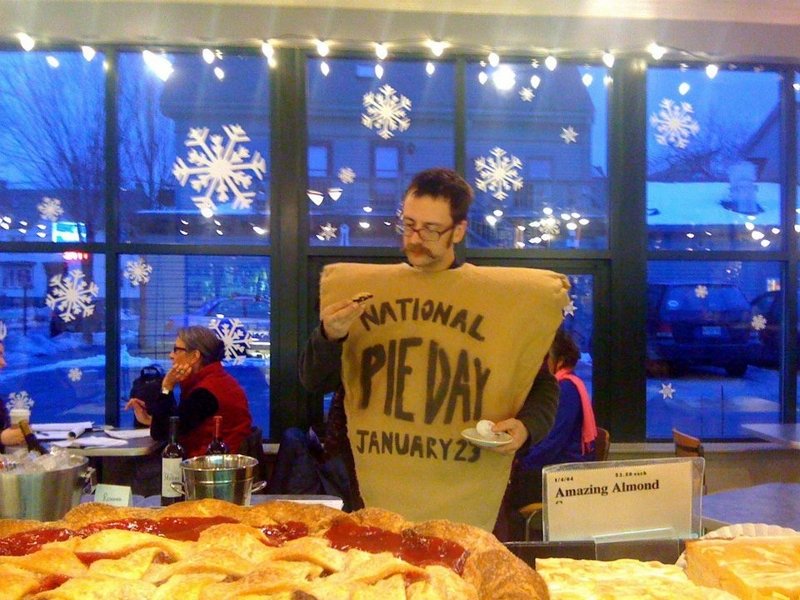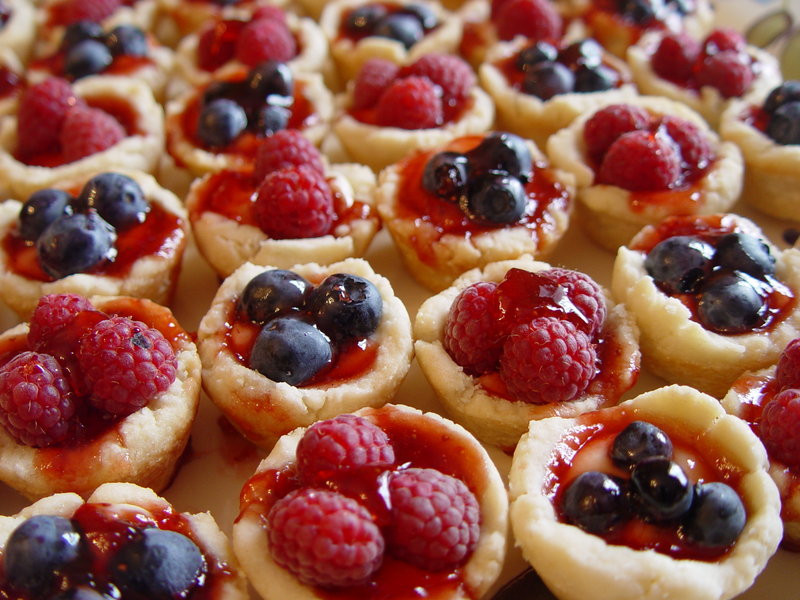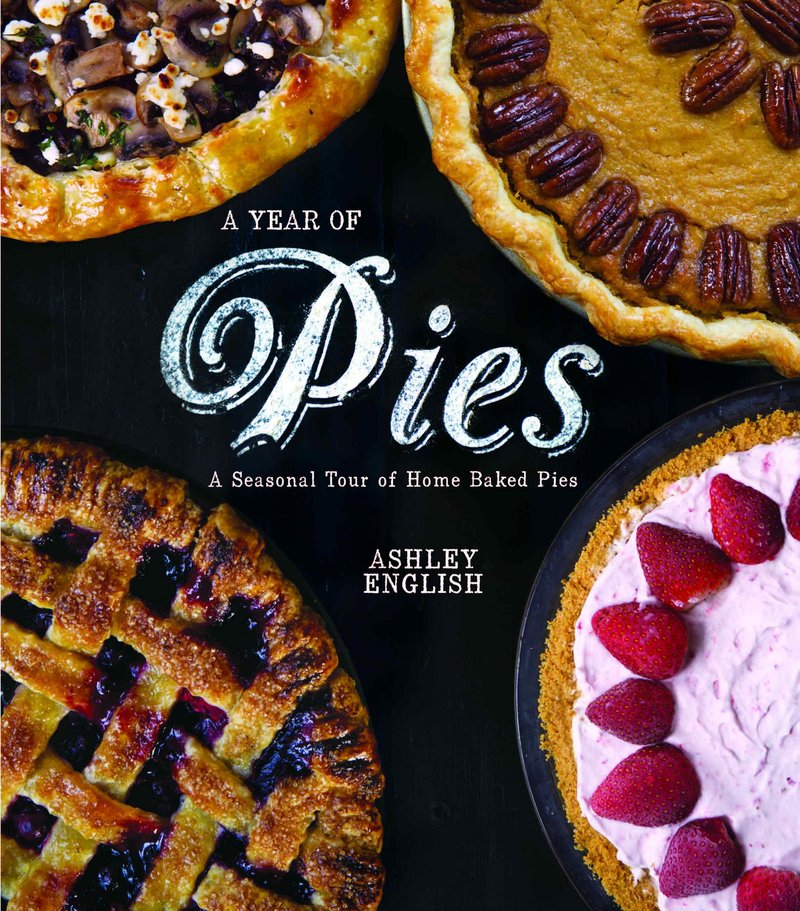Ned Swain takes pie very seriously.
Seriously enough that Wednesday he will celebrate National Pie Day by reciting pie-related poetry and performing some pie drama.
His well-worn and getting-to-be-a-bit-odoriferous pie suit (yes, he has a pie suit) will be left at home because, after three years of wear and tear, it has seen better window sills.
Swain is a member of the elusive “Portland Pie Council,” a group of five or so Portlanders who fancy pie and for the past four years have organized a Pie and Art Gala at the Mayo Street Center for the Arts to celebrate Jan. 23, National Pie Day. Generally, they keep their identities secret, so Swain has become their spokesperson, using his pie hole to promote pies made of sweet potatoes, chocolate, pecans, berries, summer vegetables and just about any other ingredient you can think of that tastes good in a crust.
“There’s a pie out there for everybody,” Swain said. “It’s a unifying thing.”
National Pie Day sounds like one of those meaningless food holidays that you find on the calendar that your insurance agent sends you at the end of the year. But you should never underestimate Americans’ affinity for pie, because if you bet against that love affair, you will lose. Americans down an average of six slices of pie every year, according to the American Pie Council, a figure that’s probably way too low for true pie devotees.
Marti Mayne is one of the organizers of the annual Pies on Parade tour in Rockland on Sunday, in which hungry ticket holders go from inn to restaurant to inn sampling more than 40 kinds of pie within just a few hours’ time. She recalls that the first year the event was held, there was a big blizzard.
“It was like the worst blizzard of the decade,” she said. “And every other thing in the state of Maine was closed except for this event, which they decided to hold because each of the inns who were participating — at that time it was just six inns — they all had made 50 pies. They had all these pies, and they said we’re going to serve them and whoever comes, comes.”
A hardy group of 50 people showed up with forks in hand and trudged from inn to inn through the snow.
As a reward, they were all given a whole pie, which some of them undoubtedly ate later in a dark kitchen all by themselves, filled with shame and regret. (More pie council trivia: One in five Americans confess that they have eaten an entire pie by themselves.)
Now in its ninth year, the Pies on Parade tour will include local restaurants and businesses as well as inns, and has to cap ticket sales at 500. The day always sells out.
The pies have gotten grander, too. Apple, blueberry and cherry, now the country cousins of the pie world, will be competing for attention with their more sophisticated relatives in the fancy duds: Cheddar roasted apple mascarpone pie; lemon curd tarts with blueberry orange nut crust; pear, blue cheese and bacon phyllo tartlets; and Key lime pie with mango coulis and pecan brittle.
Pie is the dessert mostly likely to be served both upstairs and downstairs at Downton Abbey.
Last year, 60 people showed up to the Portland Pie Council event, each of them bringing a pie to share with the other guests and compete for $50 prizes. Swain won the savory category one year with his pie of shaved skirt steak, gorgonzola dolce (a blue cheese) and walnuts. This year, his contribution will be an Italian gnocchi pie.
January is “kind of an empty time of year,” Swain said. By Jan. 23, people have recovered from Christmas and New Year’s. It’s cold, it’s gray and people are looking for something to do, a way to have some fun without all the usual family obligations and expectations that come with those other holidays.
But there is more to it than that.
Plain or gussied up, pie is an easy thing to celebrate. Pie is easy to make, despite most people’s irrational fear of making crusts, and easy to eat. There is a good reason for that old saying, “as easy as pie.”
There is “considerably less chemistry” involved in making a pie than in other forms of baking or cooking, says Ashley English, author of “A Year of Pies: A Seasonal Tour of Home Baked Pies” (Lark, $19.95).
“I’ve baked professionally, and (with pies) there’s not the mystique of yeast in rising breads,” English said. “There’s not kind of the preciousness of cupcakes. Cookies can go flat when you bake them. I think pie is just a lot more forgiving that way, and it’s comforting, too.”
In the growing popularity of pie, English senses more than a passing trend. It’s part of a broader lifestyle shift.
Pies are a good way to use up all those local and seasonal foods that people have been buying at farmers markets. Just throw all those wild Maine blueberries or Gravenstein apples or heirloom tomatoes or root vegetables into a crust, and call it pie.
“I like the creative vision of it,” Swain said, “that pie is just anything baked in a dough crust. You can put anything in it.”
Making a pie in your own warm kitchen is an extension of the nation’s renewed interest in do-it-yourself and handcrafted projects, English says. Americans want a life that is homemade and cozy again: Guys are growing beards. City folk are wearing plaid and making their own beer. People are making pie.
“I think it just fits the zeitgeist right now,” English said.
New flavors are always coming down the pike as home cooks try to make something old new again, but pies have been around for centuries. The ancient Egyptians made them, then passed on the idea to the Greeks before it spread to the Romans.
The first pie recipe, according to the American Pie Council, was published by the Romans and gave directions for a rye-crusted goat cheese and honey pie. Fast-forward a few hundred generations, and it wasn’t long before Oliver Cromwell was declaring pie eating a pagan form of pleasure. He banned it altogether, and pie had to go underground for the next 16 years.
Early English pies were served in thick crusts known as “coffyns” that often were not eaten but sometimes had bird legs hanging over the sides. In Colonial America, the spelling was changed to “coffin,”and the word became associated with the long, narrow pan used to bake a pie. The term “crust” didn’t come into vogue until the American Revolution.
Today the choices are dizzying. Someone, somewhere, counted once and found out there are 231 varieties of apple pie.
But Boston cream pie? That’s a cake.
Meat pies and pot pies are widely accepted as true pies. What about tarts and gallettes?
Yes, says English — anything that’s got some kind of top or bottom crust, with a filling that’s either open or enveloped in the dough, can be considered pie. (English has a fried green tomato and pimento cheese tart in her pie book.)
“Some quiches kind of straddle that pie-nonpie fence, too,” English said.
Cheesecake: Is it pie or cake?
English votes for cake since there’s just crumbs, not a crust, on the bottom.
Hmm, some of us are not so sure and would call it a pie.
Let’s debate that over a nice slice of you-know-what.
Happy National Pie Day.
Staff Writer Meredith Goad can be contacted at 791-6332 or at: mgoad@pressherald.com
Twitter: MeredithGoad
Copy the Story LinkSend questions/comments to the editors.






Success. Please wait for the page to reload. If the page does not reload within 5 seconds, please refresh the page.
Enter your email and password to access comments.
Hi, to comment on stories you must . This profile is in addition to your subscription and website login.
Already have a commenting profile? .
Invalid username/password.
Please check your email to confirm and complete your registration.
Only subscribers are eligible to post comments. Please subscribe or login first for digital access. Here’s why.
Use the form below to reset your password. When you've submitted your account email, we will send an email with a reset code.